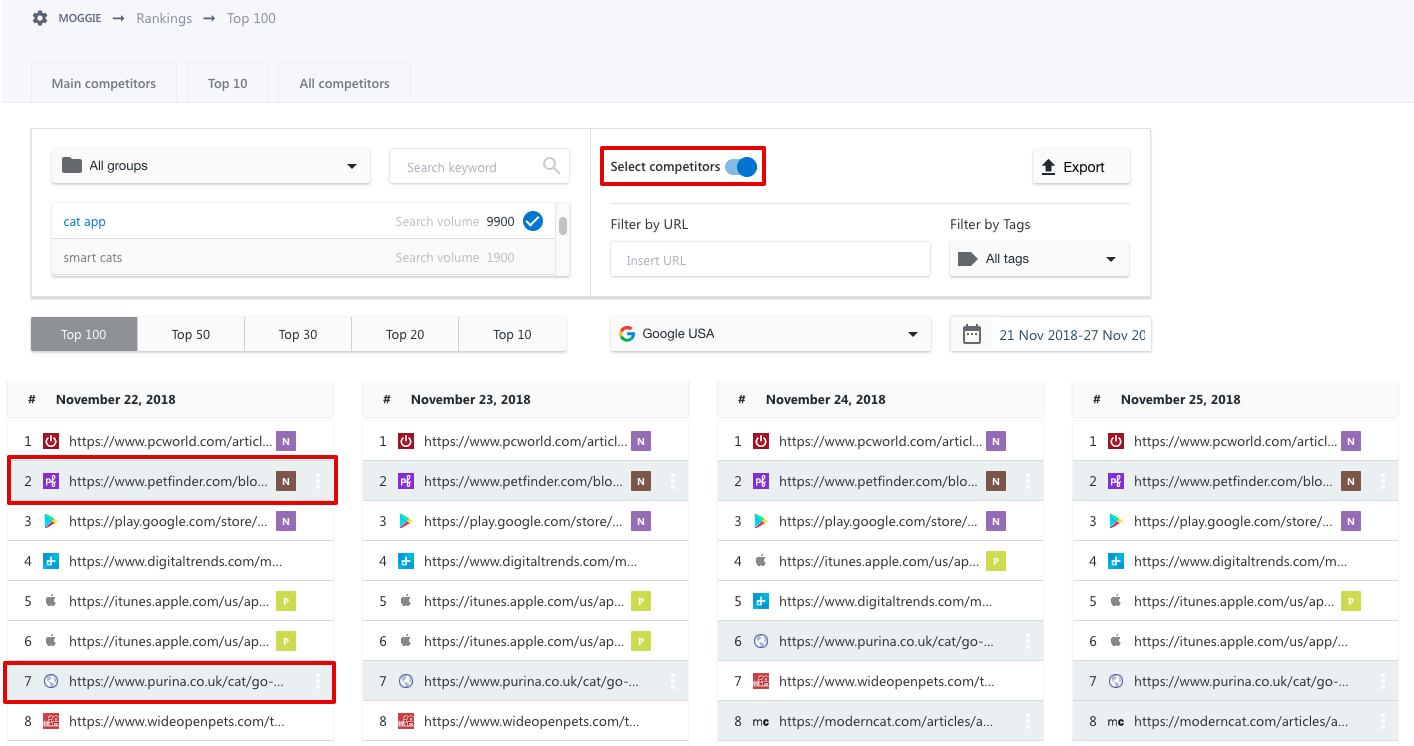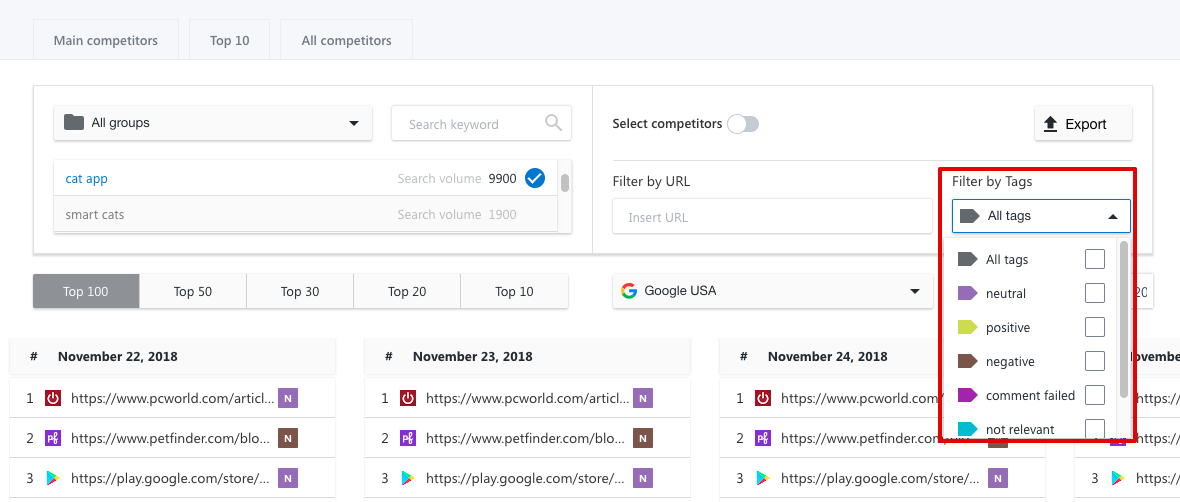This is a sponsored post written by SE Ranking. The opinions expressed in this article are the sponsor’s own.
Managing an online business can sometimes feel like living in a small village.
It seems that anyone can brag about your products and services, making everyone else around want to buy from you.
Or, on the flip side, anyone can drag your reputation through the dirt with easy-to-post nasty comments or reviews.
Maintaining a good online reputation nowadays is more important than keeping your private life away from your beloved grandmother.
Why It’s Important to Monitor Your Online Reputation
If you are running any type of business that is linked to the web in one way or another — the majority of your potential customers will search through all your online activities even before setting up a call with your sales rep or checking your Facebook page.
And what are the first things they are likely to find?
That’s right — some negative feedback.
This happens because people tend to share their negative experience much more often than the pleasant ones.
You might deserve to have a bad review or you might be a victim of mudslinging from your competitors.
Either way, you need to know how to monitor and repair your online reputation to make sure you look your best in the eyes of potential customers.
- According to some recent online research, your company’s market value is directly related to your company reputation.
- Many users make a decision to either interact with a person or a brand based on their online search.
- A growing popularity of review sites in the internet community shows that people read through the reviews posted by fellow users before communicating with the brand.
Staying unaware of your online footprint is not only irresponsible — it’s life-threatening for your business. So, be in the know and act accordingly.
How to Fix & Improve Your Online Image
The easiest and most powerful thing to do is to ask the user to remove or adjust the negative comment. This way you can straighten things out in the most peaceful and resolute manner.
Unfortunately, there are situations when the solution with amicable terms just doesn’t take place. Which means you need to use the Search Engine Reputation Management (SERM) strategy.
SERM is a set of actions that move negative reviews or posts out of the first SERP and replace them with positive information.
For example, if Google picks a negative review in return to your branded query, you need to optimize and offer Google a better article or review for the same keyword, so this information replaces the one you want to “hide.”
SERM is a long and tedious process that requires continued effort. Information in SERPs is constantly changing and, therefore, a one-time-fix-all approach won’t work at all here.
Actions to Consider
- Use all the online resources at your disposal to kick the negative out of the first-page SERP. Your site, social media profiles, directory listings, press releases distributed through the wire – the more, the merrier – are all powerful assets you can use in your quest to clean up your online reputation. And the best part — they are under your full and total control.
- Pay close attention to publications that rank high on SERPs for queries related to your business – those that attract a lot of traffic and get picked by your target audience. If you can manage to add your information to such posts, you can potentially squeeze negative information about your brand out of the SERP.
- Negative information can be presented in the form of video reviews, images, or even podcasts – so make sure you are monitoring and fixing them as well.
- The most important keywords to take into consideration when seeking and monitoring negative information on the web are the following:
- Branded queries.
- Queries that consist of your brand name, an offered service or product.
- Your brand name plus keywords such as “reviews”, “advantages”, “pros and cons”, “comparison”, and such.
As your business grows, the number of branded queries for your business in SERPs will also increase.
Moreover, your interest will shift from branded queries to include general queries that are related to your industry or niche as well.
A Scenario at Handling SERM
It’s extremely important to be in-the-know at all times regarding any negative reviews or information about your brand. And the faster you learn about it, the better.
You might try fishing this information out manually, but trust me, you’ll find it time-consuming and inefficient, especially if you have a somewhat established online presence that accounts for many online publications.
It’s better to automate your SERM efforts and use special tools that help you quickly get the information you need, taking your history into account.
We at SE Ranking completely understand the importance of an online reputation which is why we’ve developed a tool called SERP Tracker that can be found in the Rankings section within our Keyword Rank Tracking tool.
![]()
It’s an easy to use yet very effective tool for monitoring the keywords you manage through SERM, as well as discovering ideas on how to fix your damaged online presence, if that is the case.
The SERP Tracker tool is part of the “Ranking” tab. In order to detect where and how your SERM query is used on the web, do the following:
1. Add the Query to Your Project
Add to your project the query which search engine reputation you want to manage.

2. Label the Sites
Label the sites you get in the list. For example, sort the websites using tags such as:
- “Positive” for positive mentions.
- “Neutral” for those that are neither good nor bad.
- “Negative” for the ones that display negative information about the managed keyword.
That way, you’ll see right away what kind of actions you might be expected to perform when working with each type of website.

Competitors added to your projects are automatically highlighted, so you can quickly sort them out from the list.

3. Reach Out to the Sites on Your List
Work on the websites that are presenting negative information about your brand.
First, determine which ones are easy to get ahold of and work your way in to make amends with the publisher or reviewer.
Then, work on the ones that are popular and that allow you to quickly place info about your brand. The placement will then work as a pusher that kicks the negative info out.
You can add tags as you work down through the list.
For example, you can mark the resources that you’ve already contacted or those that are not accepting new entries at the moment.

Once the “easy” list has been worked through, move on to working with websites that are harder to access and/or reach out to.
The tags can be modified as you go through the list of resources.
For example, if you’ve managed to turn around a negative review about your product or service — you can change the tag for this resource from “Negative” to “Positive.”
4. Monitor Your Target Query
Keep monitoring your target query over a period of time to keep abreast of any changes in your online presence.
Re-evaluate the new list of resources and work through it just like you did when you initially detected traces of a damaged reputation.

Using SE Ranking’s SERP Tracker, you can compare the history over any timeframe that you need to check.
This enables you to make an educated decision on what resources to work with, those that you need to keep a constant close eye on, and those that are loyal to your brand.

Have You Tried Out SE Ranking for Free?
Did you get a chance to test the SERP Tracker tool?
If you answered “No” to both questions, try our SEO platform completely free – no credit cards involved.
Image Credits
Featured Image: Image by SE Ranking. Used with permission.
In-Post Photos: Images by SE Ranking. Used with permission.
Subscribe to SEJ
Get our daily newsletter from SEJ’s Founder Loren Baker about the latest news in the industry!
